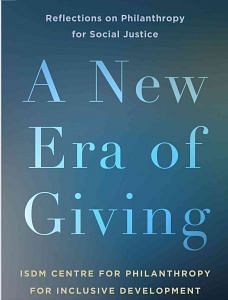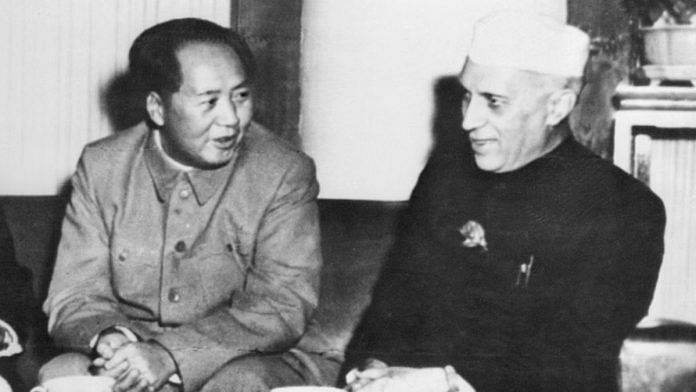GROWING up in a joint family in the city of Kanpur, certain habits were inculcated amongst all children. One of these was savings in a gullak (Hindi for earthen money box). These savings, in paisas, were essentially made from gifts given by visiting relatives or on certain festivals and, occasionally, the loose change pocketed when we were sent to the shops. Every now and then, we were asked to break our gullak — it was the only way to take the money out — and share some of those savings with certain “causes” supported by our family of teachers. Two of the most prominent ones I remember donating to were a local orphanage (where my mother served on a managing committee) and cultural activities organised in our neighbourhood between Dussehra and Diwali, or Sankranti and Shivratri (two periods — October and February/March — roughly coinciding with autumn and spring seasons in North India).
Little did I realise that this practice will be called charitable giving or philanthropy!
Even back then, many families like ours supported the schooling of children whose parents were providing various services to the family. Organising sports competitions and festivals by collecting donations (chanda) was very common then; it is still a popular practice in North India for Ramlila (and Pujo in Bengal). Wrestling competitions (kushti dangal) with prizes are still organised through donations. Just the other day, a Dahi Handi festival in Mumbai was put up with such funds, including massive prize monies amounting to lakhs of rupees!
This type of giving — of time, skills and monetary contributions, including assets — has been an integral part of Indian society. All religions born and practiced in the Indian subcontinent encourage giving for the wellbeing of the needy. From feeding birds and animals to pyayu, a custom in North India (providing drinking water to passers-by), these are universal practices of giving, much of which is second nature to us. These practices of contributing to the wellbeing of others, a larger societal good, were part of the socialisation of growing up in this region.
In every religion, contribution to society is mandatory for its followers. The concept of dana (voluntary giving) has been the cornerstone of the spirit of volunteerism in India. A noteworthy feature of all major religions has been the emphasis they placed on charity and sharing of wealth with others, especially the poor and the needy. In all probability, it is the persistence of the above preaching flowing from generations that the psyche of an average Indian has been completely ingrained with the concept of benevolence. Most think that God loves those who feed the hungry and those who give their clothes to the needy.
In pre-Independence India, Mahatma Gandhi called upon citizens and the business community to support constructive social work practices to encourage mobilisation of volunteers for the freedom struggle against the British empire. Their support was critical, but it also left many of those businessmen and their enterprises vulnerable to “imperial” harassment and regulation.
This practice of business community members giving back for the benefit of society and helping the needy continues even today.
Also read: Govt has been counting India’s poor all wrong—it’s ad hoc, arbitrary
PART I: 25 years of philanthropy for nation building
During the first 25 years of freedom (1947-72), philanthropic activities continued along the same lines as before Independence. Local giving for immediate and visible causes remained popular. Donation for religious causes, an age-old practice, was a favoured custom during this period too. Construction of temples, mosques, churches and gurudwaras was done through charitable giving. In the event of droughts or floods, concerted efforts were made to reach out and mobilïse donors. At the time, the channels of contributing towards relief were primarily controlled by the government. I recall how even children were asked to “break their gullaks” when the then Prime Minister(s) appealed for support during 1962 war with China and 1965 war with Pakistan.
Another stream of charitable giving at that time comprised of support for the hundreds of Gandhian institutions set up across the country during the Freedom Movement. Several such institutions received support from the local business community. Two important public agencies created post-Independence acted as supporters of such local initiatives in that period. In 1953, there was the Central Social Welfare Board to support local efforts in institutionalised care to the needy and “destitutes” — orphans, abandoned women, street children, etc. (Later, state boards were also set up.) Then in 1957, the Khadi and Village Industries Corporation was set up as an independent entity to provide access to credit and act as markets for village industries that had sprung up during the Freedom Movement.
Both these agencies were instituted by the then national government in the belief that local philanthropic efforts for such charitable causes could be strengthened with additional inputs.
The more formally organised “voluntary development” sector (as it was called then) emerged in the second 25-year period after Independence (1972-97).
It may seem as though global giving to causes in India began during this period. But, throughout the Freedom Movement, donors from around the world also supported the nation’s struggles. Education and health programs established by missionaries in India were recipients of foreign aid ever since the subcontinent was colonised (a practice followed in other regions under the British rule as well).
 This excerpt from Rajesh Tandon’s ‘A New Era of Giving’ has been published with permission from ISDM.
This excerpt from Rajesh Tandon’s ‘A New Era of Giving’ has been published with permission from ISDM.



